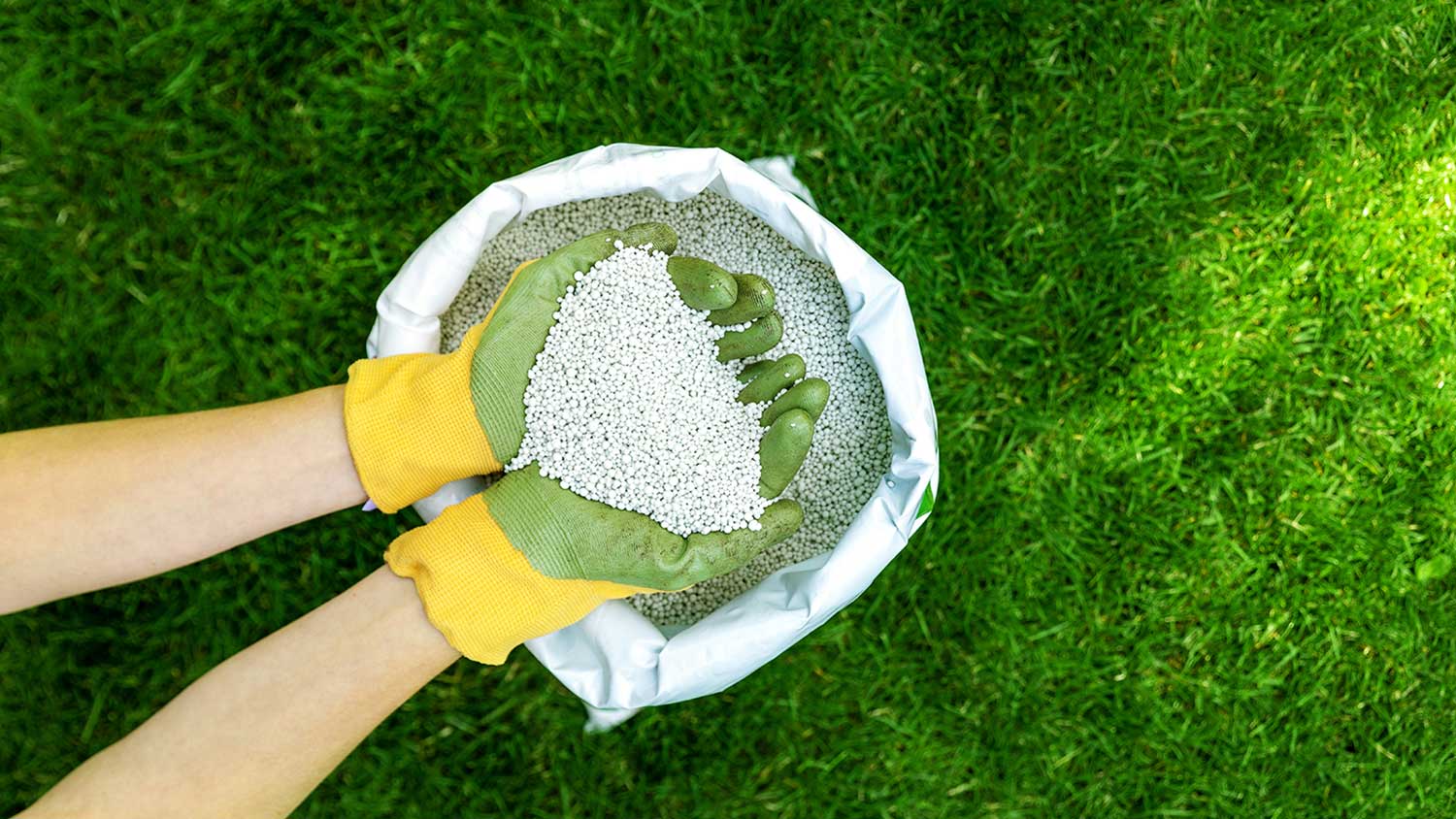The Beginner-Friendly Guide to Growing the Greenest Grass
A healthy, green lawn starts at the seed


Despite the fact that it’s all over the place, grass can be surprisingly tricky to care for. It needs water like any other plant, but you’ll need to go further if you really want that next-level fullness and vibrance. Whether you’re fresh to the grass game or just looking to perfect your lawn care skills, here’s how to grow and maintain green grass successfully.
1. Choose the Right Type of Grass
The best way to get a green, healthy lawn is to choose grass seed that will naturally thrive where you plant it. The two basic categories are warm-season and cool-season grasses. Cool-season grasses have a higher cold tolerance and thrive in the Midwest and Northern U.S. as well as Canada.
Warm-season grasses have a very low tolerance to cold and do best in hotter climate zones with mild winters. If your climate falls within the transitional zone, meaning it has hot summers and cold winters, cool-season grasses are your best bet (though some varieties of warm-season grasses will work as well).
Along with your area’s climate, it’s important to consider the level of sunlight your grass will get. Any type of grass is happy in full sun, but only certain types will tolerate shadier areas. Fescue is an excellent shade-tolerant choice for cool-season grasses, while warm-season grasses like Centipede, St. Augustine, and Zoysia can grow in partial shade.

2. Prepare the Soil for a Healthy, Green Lawn
A healthy lawn starts with healthy soil. To give your grass a solid foundation, start by removing any rocks, debris, and weed roots. Then, lay down a starter fertilizer and rake it for a smooth, even surface.
Once you’ve prepared the soil, it’s best to add a layer of compost or composted manure to pack it with nutrients. Aerating your lawn is also essential, especially if you have a lot of sneakers and paws tromping over it on a regular basis.
3. Plant Grass Seeds Evenly
A key tip when planting new grass seed is to spread it evenly. Otherwise, you could end up with bare or sparse patches that prevent your lawn from living its best, greenest life. You can eyeball it for smaller areas, but a mechanical spreader is your best bet for an even coat.
4. Water New Grass at Least Twice a Day
Proper watering is crucial when you’re growing new grass. Without consistently moist soil, the seed can’t become healthy, established grass. Be sure to keep new seeds watered at least twice a day. Avoid the hottest, sunniest hours to prevent water loss due to evaporation.
5. Fertilize (but Don’t Overdo It)

Proper fertilization is key for a healthy, green lawn. This is another area where it’s important to consider which type of grass you have, as warm-season grasses and cool-season grasses will each have different needs.
Soil pH is also extremely useful to know when selecting a fertilizer, so consider getting an evaluation from a local soil testing service. A slow-release fertilizer is typically the best choice, as this will slowly release nitrogen and help your lawn thrive over time.
Bear in mind that you can have too much of a good thing—excessive amounts of fertilizer can actually burn your lawn from too much salt and nitrogen. Read instructions carefully or bring in a lawn care professional to eliminate any guesswork.
6. Fix Brown Grass or Barren Spots With New Grass Seed
If you have brown patches on your grass, you can spread new seed in a process known as overseeding. This involves the same soil prep and aeration as planting grass seed all over, just focused on the weak spots where you want more grass to grow.
Spread an even layer of seed and keep it watered at least twice a day. Avoid foot or paw traffic until the seed is well-established.
7. Don’t Mow Too Low
It might seem like a time-saving hack, but mowing too much height off your grass at one time can be extremely detrimental. Mowings that remove more than one-third of its height at once can stress your lawn out, leaving it vulnerable to browning and getting overtaken by weeds.
To keep it healthy and strong, use a higher mow setting and bust out the mower whenever there’s at least 3 inches of mow height.
8. Stay on Top of Weeds When Growing Grass
If you’re trying to grow healthy, vibrant grass, weeds are public enemy No. 1. Weeds such as crabgrass, white clover, and creeping charlie love to sprawl across your lawn and steal sunlight, water, and nutrients from the grass.
The most effective way to (literally) uproot a weed’s nefarious efforts is to pull it up by hand. Keep in mind that these greedy plants spread fast, so build a routine to prevent yourself from getting overwhelmed.
9. Paint It Green
Tired of having to look at a yard full of brown grass, despite your best efforts? Sometimes the weather is just too volatile, or there’s a drought that makes it impossible to grow greener grass. If you’ve ever wondered if you can just paint your lawn green, that’s a thing.
We’re not talking regular spray paint (steer clear of using that)—instead, look for specialized turf paint at your local hardware store or garden center. These use special dyes that won’t harm the environment, plus they’re totally safe for people as well as pets.
10. Keep Tending to Your Healthy, Green Grass

A lush lawn is more of a journey than a destination. Once you’ve achieved that brilliant green, it’s important to keep up with lawn care to preserve its beauty. Keep it watered, aerated, weeded, and properly fertilized for healthy vibrance throughout the growing season.





- Landscapers
- Tree Surgeons
- Gardening Services
- Landscape Architects
- Sod Installation
- Tennis Court Contractors
- Landscape Design
- Retaining Wall Companies
- Grading Companies
- Landscape Rock & Sand Delivery
- Mulch Delivery Services
- Pond Companies
- Artificial Grass Companies
- Shrub Removal & Trimming
- Backyard Design Companies
- Commercial Landscaping
- Koi Pond Services
- Backyard Landscapers
- Trampoline Assembly
- Hedge Trimming
- Pond Services
- Garden Design
- Outdoor Plant Watering
- Putting Greens
- French Drains
- Turf Installation
- Sod Removal Services
- Lawn Repair Services
- Brush Chipping Services
- Hardscape Contractor
- Landscape Rock Removal
- When is the Best Time to Cut Grass? Why Turf Timing Matters
- 6 Ways to Kill Grass On Your Lawn
- When the Grass Is Greener: 10 Best Grass Types for Your Lawn
- 7 Tips for Keeping Your Grass Green During a Drought
- How to Kill Grass in Flower Beds: 8 Easy Methods to Try
- Pros and Cons of No-Mow Grass: What to Consider
- What Is Bermuda Grass? Everything You Need to Know for a Healthy, Green Lawn
- Does Grass Seed Go Bad? What You Need to Know About Planting Old Seeds
- 9 Showstopping Types of Ornamental Grass to Liven Your Landscape
- When Grass Becomes a Weed: How to Control and Get Rid of Bermuda Grass










